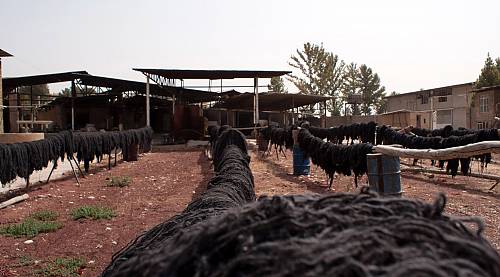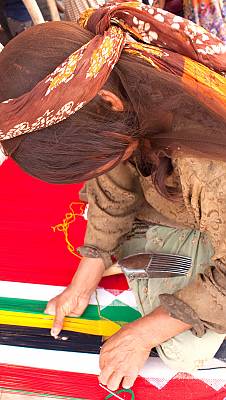Traditional skills of carpet weaving in Fars
Inscribed in 2010 (5.COM) on the Representative List of the Intangible Cultural Heritage of Humanity
Iranians enjoy a global reputation in carpet weaving, and the carpet weavers of Fars, located in the south-west of Iran, are among the most prominent. Wool for the carpets is shorn by local men in spring or autumn. The men then construct the carpet loom – a horizontal frame placed on the ground – while the women convert the wool into yarn on spinning wheels. The colours used are mainly natural: reds, blues, browns and whites produced from dyestuffs including madder, indigo, lettuce leaf, walnut skin, cherry stem and pomegranate skin. The women are responsible for the design, colour selection and weaving, and bring scenes of their nomadic lives to the carpet. They weave without any cartoon (design) – no weaver can weave two carpets of the same design. Coloured yarn is tied to the wool web to create the carpet. To finish, the sides are sewn, extra wool is burned away to make the designs vivid, and the carpet is given a final cleaning. All these skills are transferred orally and by example. Mothers train their daughters to use the materials, tools and skills, while fathers train their sons in shearing wool and making looms.










